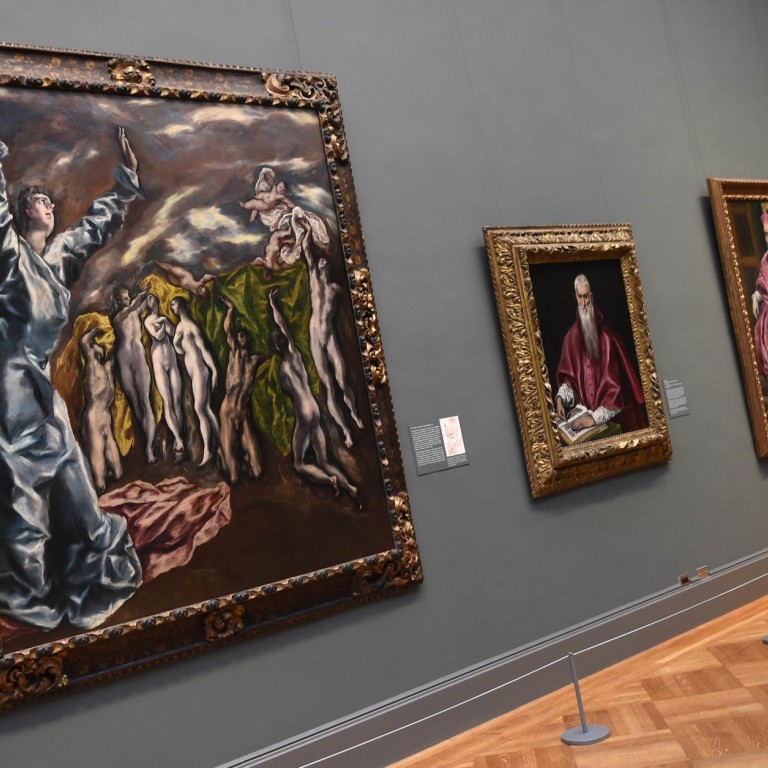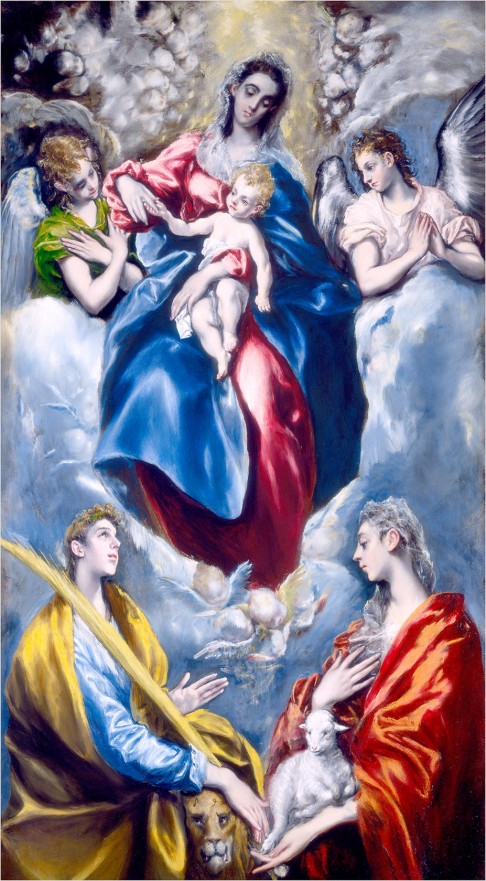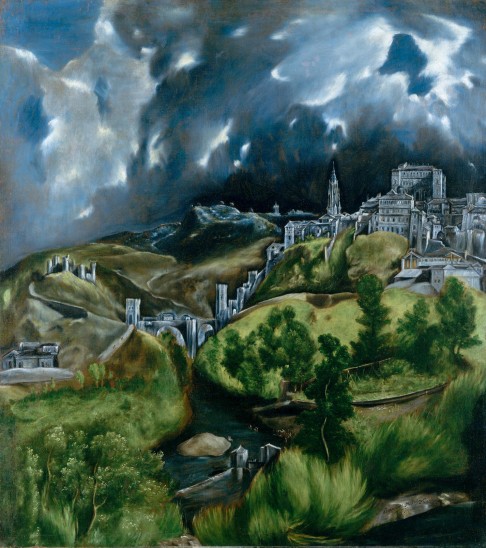
Four centuries after his death, El Greco still fascinates
Two US exhibitions show why Spanish artist El Greco still fascinates 400 years after his death
It has been 400 years since Domenikos Theotokopoulos died, in 1614, and in Spain there have been major celebrations of his work. In the US, the anniversary of the artist known as El Greco has been treated less lavishly. The two phenomena are related: New York's Metropolitan Museum and the National Gallery in Washington lent important works to Spanish exhibitions, which meant neither could mount a major show.
But the artist is too popular - and too rewarding - to be entirely neglected, so now, late in the year, the Met and the National Gallery have mounted small exhibitions. Both shows are contained in a single room, both centre on one or two pieces already familiar to and beloved by audiences, and both are filled out with lesser works, in some cases by the studio of El Greco, who was a savvy entrepreneur and maintained a busy business of making copies of his own works.
And yet both are potent if circumscribed overviews. "El Greco in New York" is billed as "a mini-retrospective", with works from the Met and the Hispanic Society of America, and is dominated by two masterpieces, and .
The National Gallery's "El Greco in the National Gallery of Art and Washington-Area Collections" draws on its own rich holdings, plus works from Dumbarton Oaks and the Phillips Collection in Washington and the Walters Art Museum in Baltimore. The newly restored and the magnificent preside over this exhibition.
Neither exhibition includes work from the artist's earliest period, when he was an icon painter in Crete. They take up the thread with his move to Italy, where he spent time in Venice and Rome, and began working in a style influenced by Titian, Veronese and Tintoretto.
These early works often feel fussy and mannered, with a nervous energy that hasn't yet been incorporated into the expressive freedom of his later works. , from the National Gallery, was probably painted before 1570, when he was working in Venice, and its brilliant colours and serpentine figures connect it to that milieu; but although rich in narrative drama, it also feels cluttered and overstuffed, a painting clamouring to be noticed and failing at the same time.

And yet one is glad to have this work, and the circa-1570 at the Met, included, because there is a tendency to define the artist only by the works of his mature style, the El Greco of Spain, and in particular the late El Greco from Toledo.
The power of these works, and their influence on artists from Mary Cassatt and Edgar Degas to Pablo Picasso and Jackson Pollock, have tended to leave the impression of an El Greco disconnected from time and place, a trans-historical inspiration to genius across the ages.
El Greco was inspiring, to be sure, but he was also a chameleon, keenly alert to the religious and social forces of his day, and the astonishingly free and expressive style that he developed in Spain didn't emerge like a flash of inspiration but was built upon a lifetime of absorbing and developing the techniques he acquired in Italy and Crete.
The New York exhibition does a slightly better job of placing El Greco in that larger context, in part because it includes portraits and a fascinating miniature among the more flamboyant mannerist works of his Spanish years.
The astonishingly free and expressive style [El Greco] developed in Spain didn’t emerge like a flash of inspiration but was built upon a lifetime of absorbing and developing techniques acquired in Italy and Crete
The portrait of Cardinal Fernando Nino de Guevara, probably made around 1600, is by no means conventional, but it shows El Greco's ability to channel other artistic tendencies, in this case Titian's psychological penetration. If the tiny, oval miniature portrait of a man made sometime in the late 1580s is in fact by El Greco - the Met acknowledges there has been dispute on this point - it, too, demonstrates the artist's ability to turn off almost all the salient characteristics of his style and produce a relatively simple, seemingly objective and documentary image.
But of course, it is not this El Greco that attracts us. It is the fluid El Greco, the chromatically exuberant El Greco, the mannerist El Greco who tends to the visually bizarre, in rather the same way that his contemporary, composer Don Carlo Gesualdo, tended to the dissonant and what now sounds to us like atonality.
The bizarre is everywhere present in both exhibitions. at the Met looks like a bit of modern dance staged against the backdrop of oversized cloaks, creating a curtained space that thrusts the drama forward, as if El Greco was trying to break the theatrical fourth wall.
Fabric isn't just something to be rendered; it seems essential to some inner compulsion in the artist's reimagining of classical biblical scenes. at the National Gallery recasts the biblical encounter of Mary and her cousin Elizabeth as a dialogue of two cloaks, the faces barely teased out from the shadows.

The National Gallery's is explicitly a story about fabric, about an elegant young soldier on horseback who shares his green cloak with a naked man who stands meekly beside him. The saint holds out his sword, perhaps to cut the fabric, but that first reading of the image doesn't quite resolve its ambiguity.
Why is there more fabric flowing down one side of the horse than the other? If he's about to cut the material, why isn't the sword positioned to do that? The painting leaves one with the sense that the cloak itself is miraculously oversized, as if - rather like the story of the fishes and the loaves - there will always be more cloak coming. The ostensible story points one towards a more intangible drama between these two men.
Even in the basic visual construction of images, El Greco continually creates small fissures and cleavages that compel the viewer to set aside literal reading. Often it seems that people who are meant to be intently studying or watching something aren't quite looking at the thing itself, but slightly above or beyond it.
An image of St Francis in the New York show is a fragment from a painting that originally showed him half-length, gazing at the sky. But his eyes are so torturously raised that he seems, in fact, to be staring at something written on the inside of the hood that covers his head.
Another New York painting, , at first invites you to assume that Christ's gaze is parallel to the short arm of the cross he carries, yet it seems to diverge slightly, as if the line of his vision and the line of the cross enact a tiny allegory of perspective, the miracle of representational painting.
In the end, you are left with nothing but questions. Why is a leg so weirdly foreshortened? Why does a saint who is supposedly writing hold open a book that is already filled with text? Why is there a circle with a box inside it at the foot of St Martin's horse?
There are reasonable answers to all of these, but it is the possibility of unreasonable answers that makes El Greco's works so exciting. And always this paradox: if you want to know why one of his paintings works so well, look for all the reasons it shouldn't work. That's why.
